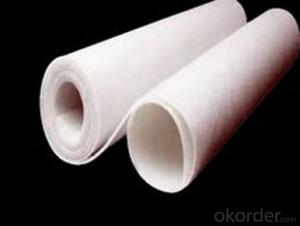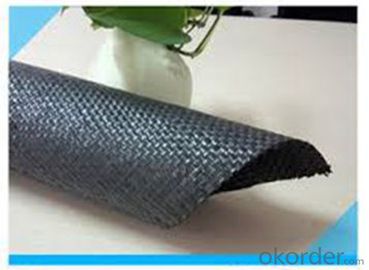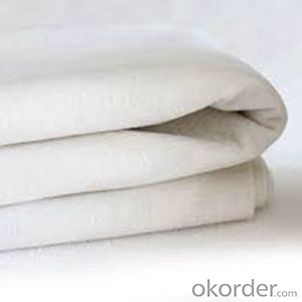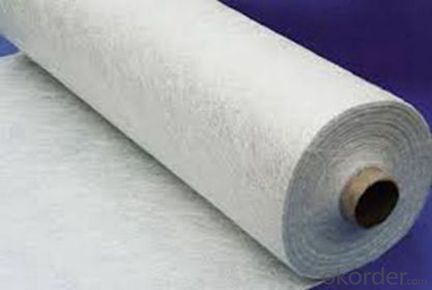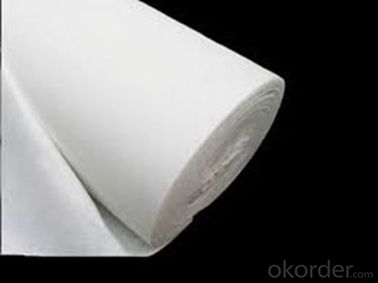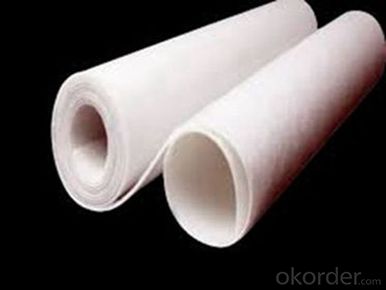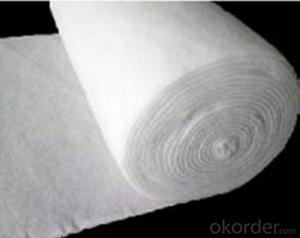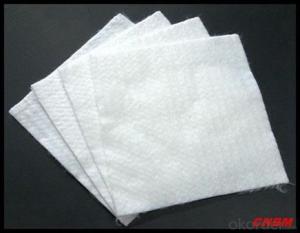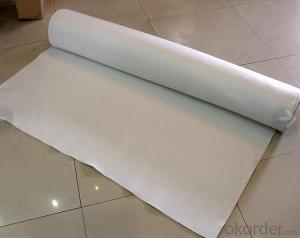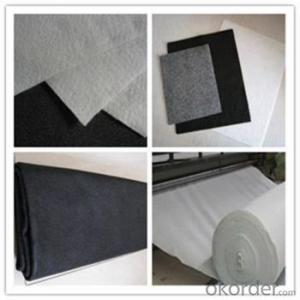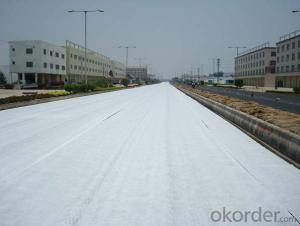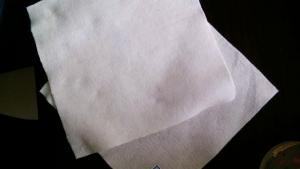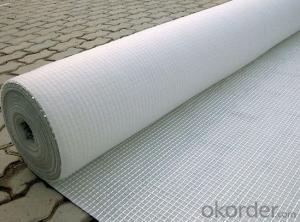Terram 1000 PP Nonwoven Geotextile Fabric Reinforcement and Drainage CNBM
- Loading Port:
- China main port
- Payment Terms:
- TT OR LC
- Min Order Qty:
- 4000 g/m²
- Supply Capability:
- 1000000 g/m²/month
OKorder Service Pledge
OKorder Financial Service
You Might Also Like
Specification
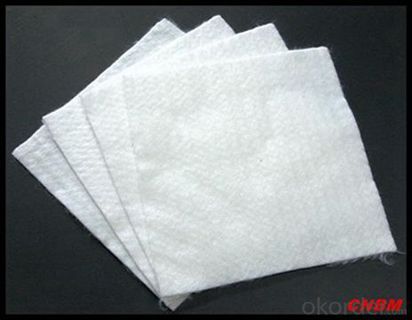
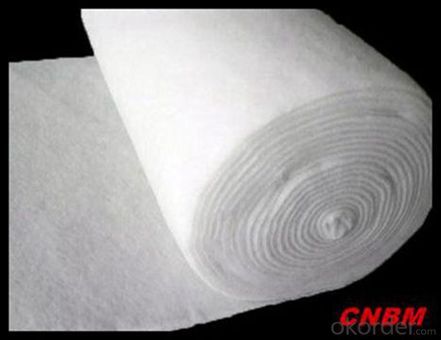
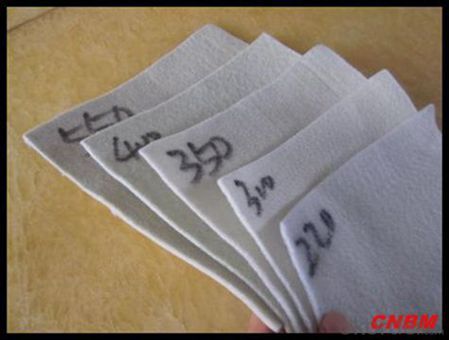
Product Description
1. short fiber needle punched nonwoven geotextiles (heat set or not) Pet short fiber
Geotextiles are permeable nonwoven fabrics used to separate,filter,reinforce, protect or drain.Geotextiles allow filtration or separation of granular layers in roads and rail applications,used to protect membranes in landfill applications,used in coastal defence applications and used in landscaping to protect surfaces and structures from weeds and root growth.
Geotextiles are availabel as woven and non-woven .As liner protection, against physical damage, the non wovens are normally the answer.They are made up of fibers of polyester or polypropylene in random directions and punched together by needles during the manufacturing process.Geotextiles are commenly used to separate layers like clay and drainage and to protect liner from damage.
FAQ:
Q: What kind of payments does jenor support?
A: T/T, L/C, Cash are accepted.
Q: Do you charge for the samples?
A: Accordeing to our company policy, the samples are free, we only charge the freight fee. And we will return the freight fee during the next order.
Q: Can you produce according to customers' design?
A: Sure, we are professional manufacturer, OEM and ODM are both welcome.
Q: Do you have other products?
A: Yes, please check the pictures:
Packaging & Shipping
Packing: PLASTIC FILM INSIDE, AND WOVEN BAG OUTSIDE
Shipping: About 15 days after receipt the deposit
Quality assurance
1.On a regular basis or as per your request,we entrust national testing agencies to conduct quality inspections
2. Strictly in accordance with the ISO9001-2008 international quality system standard,we monitor and manage the whole process throughout production,quality testing,and measurement to ensure product quality
3. For quality-related construction delay or substandard construction(except for damage or losses due to customer’s responsibility or irresistible natural disasters),we have refunding,replacement,and repair services.We will respond to customers’ feedbacks on quality issues within 24 hours.
- Q: How do geotextiles help in filtration?
- Geotextiles help in filtration by acting as a physical barrier that allows water to pass through while filtering out fine particles and contaminants. They prevent the clogging of the filtration system, improve water quality, and enhance overall filtration efficiency.
- Q: How are geotextiles used in civil engineering?
- Geotextiles are extensively used in civil engineering as a versatile material for various applications. They are commonly employed for soil stabilization, erosion control, drainage management, and reinforcement purposes. Geotextiles can be installed to prevent soil erosion on slopes, act as a separation barrier between different soil layers, provide filtration in drainage systems, and enhance the strength of embankments or roads. Their permeable nature allows for water and gas flow while effectively retaining soil particles, making them an essential component in many civil engineering projects.
- Q: How do geotextiles help in preventing the loss of fine particles in filter layers?
- Geotextiles help in preventing the loss of fine particles in filter layers by acting as a barrier that allows water to pass through while retaining the fine particles. They provide a stable and durable structure that supports the filter layer, preventing it from dislodging or eroding. This ensures that the filter layer remains intact and effectively filters out the fine particles, reducing their loss and improving the overall performance and longevity of the filtration system.
- Q: What are the different geotextile installation techniques for erosion control blankets?
- There are several geotextile installation techniques for erosion control blankets, including anchoring, stapling, trenching, and pinning. Anchoring involves using stakes or pins to secure the blanket to the ground. Stapling uses staples or nails to attach the blanket directly to the soil. Trenching involves burying the edges of the blanket in a shallow trench to prevent water from getting underneath. Pinning involves using metal pins or stakes to secure the blanket to the ground. Each technique has its advantages and is chosen based on the specific needs and conditions of the erosion control project.
- Q: How do geotextiles help in soil stabilization?
- Geotextiles help in soil stabilization by acting as a barrier between the soil and other materials, such as water or rocks, preventing erosion and promoting the stability of the soil. They also enhance the soil's mechanical properties, such as strength and load-bearing capacity, by distributing the applied forces more evenly. Additionally, geotextiles can control the filtration and drainage of water, reducing the risk of soil saturation and improving its overall stability.
- Q: Can geotextiles be used in wetland restoration projects?
- Yes, geotextiles can be used in wetland restoration projects. Geotextiles, which are permeable fabrics made from synthetic materials, can serve multiple purposes in wetland restoration. They can be used to stabilize soil, control erosion, and filter sediment, while still allowing water and nutrients to pass through. By using geotextiles, wetland restoration projects can effectively manage water flow, enhance vegetation growth, and protect against erosion, ultimately aiding in the successful restoration of wetland ecosystems.
- Q: How do geotextiles contribute to sediment control?
- Geotextiles contribute to sediment control by acting as a barrier that prevents soil erosion and sediment movement. They are placed in areas where soil erosion is likely to occur, such as construction sites or slopes, and help to stabilize the soil by allowing water to pass through while retaining sediment particles. This prevents the sediment from being washed away by water runoff, ultimately reducing the amount of sediment that enters nearby water bodies and preventing environmental degradation.
- Q: Where to sell waterproof geotextile
- Hello, waterproof geotextile is a composite geomembrane if necessary to the Department of Huazhi geotextile material manufacturers to answer the beginning of 135, 4791 last 9192, do not forget Oh
- Q: How do geotextiles help with erosion control in riverbanks?
- Geotextiles help with erosion control in riverbanks by providing a protective barrier that prevents soil erosion, while allowing water to flow through. They stabilize the soil, preventing it from being washed away by the force of the water, and also promote the growth of vegetation, which further helps to anchor the soil and protect against erosion.
- Q: Mainly how to filter layer construction, cutting for the weak weathering rock
- The walls behind the sandbags ah, but in most cases are mechanical backfill, and then the top surface of a layer of sandbags and composite drainage network mean
Send your message to us
Terram 1000 PP Nonwoven Geotextile Fabric Reinforcement and Drainage CNBM
- Loading Port:
- China main port
- Payment Terms:
- TT OR LC
- Min Order Qty:
- 4000 g/m²
- Supply Capability:
- 1000000 g/m²/month
OKorder Service Pledge
OKorder Financial Service
Similar products
Hot products
Hot Searches
Related keywords




